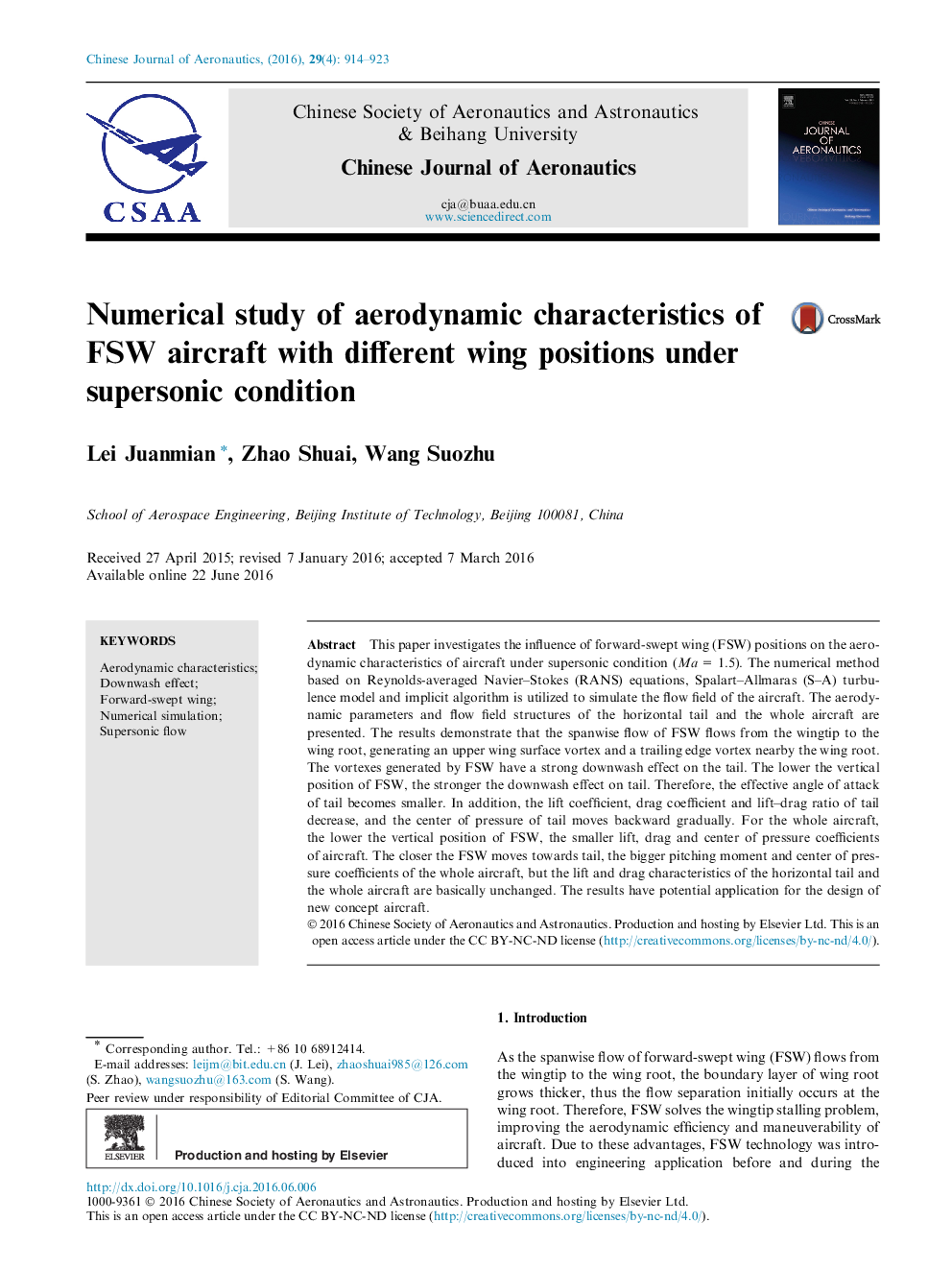| Article ID | Journal | Published Year | Pages | File Type |
|---|---|---|---|---|
| 757070 | Chinese Journal of Aeronautics | 2016 | 10 Pages |
This paper investigates the influence of forward-swept wing (FSW) positions on the aerodynamic characteristics of aircraft under supersonic condition (Ma = 1.5). The numerical method based on Reynolds-averaged Navier–Stokes (RANS) equations, Spalart–Allmaras (S–A) turbulence model and implicit algorithm is utilized to simulate the flow field of the aircraft. The aerodynamic parameters and flow field structures of the horizontal tail and the whole aircraft are presented. The results demonstrate that the spanwise flow of FSW flows from the wingtip to the wing root, generating an upper wing surface vortex and a trailing edge vortex nearby the wing root. The vortexes generated by FSW have a strong downwash effect on the tail. The lower the vertical position of FSW, the stronger the downwash effect on tail. Therefore, the effective angle of attack of tail becomes smaller. In addition, the lift coefficient, drag coefficient and lift–drag ratio of tail decrease, and the center of pressure of tail moves backward gradually. For the whole aircraft, the lower the vertical position of FSW, the smaller lift, drag and center of pressure coefficients of aircraft. The closer the FSW moves towards tail, the bigger pitching moment and center of pressure coefficients of the whole aircraft, but the lift and drag characteristics of the horizontal tail and the whole aircraft are basically unchanged. The results have potential application for the design of new concept aircraft.
